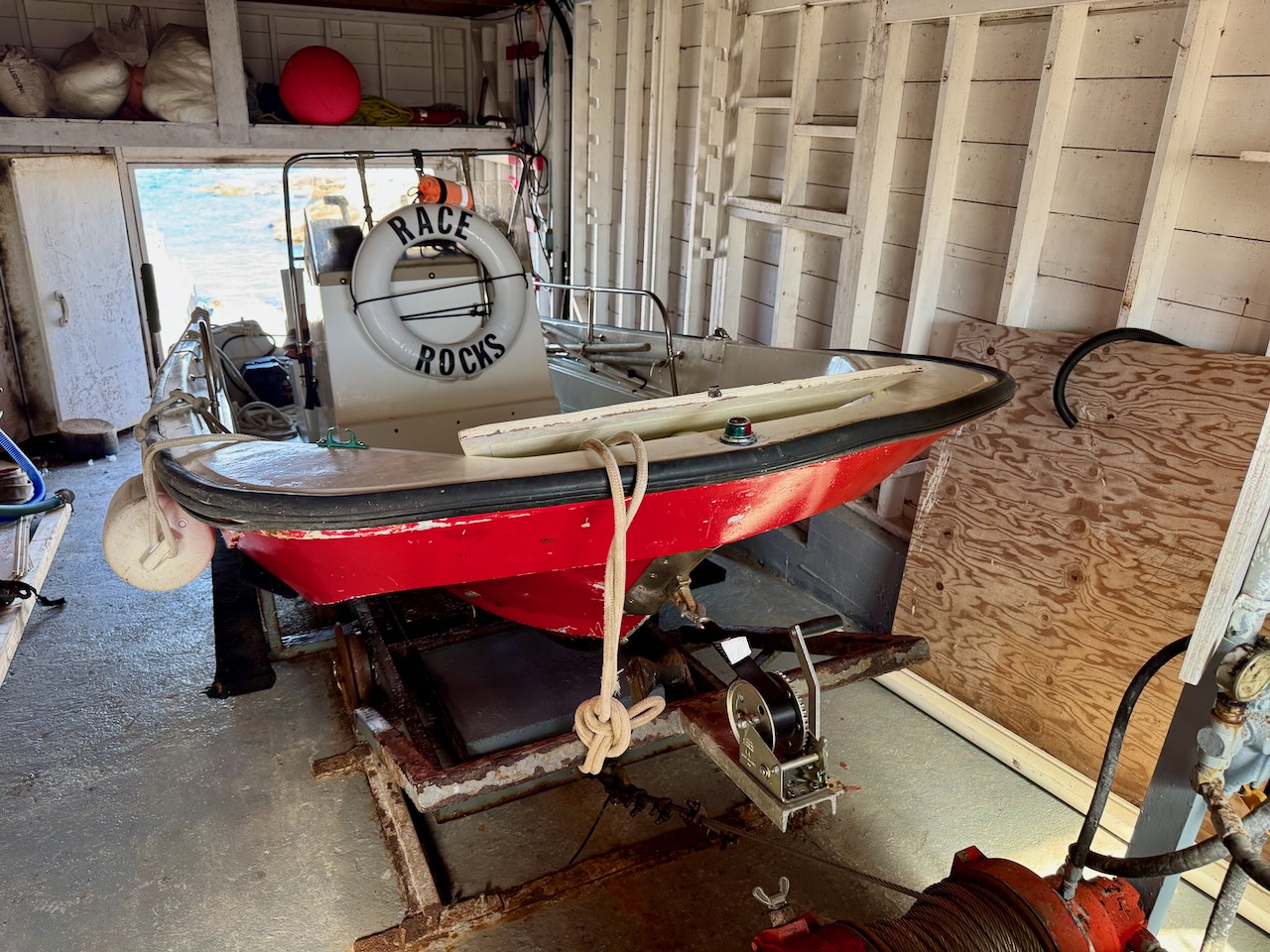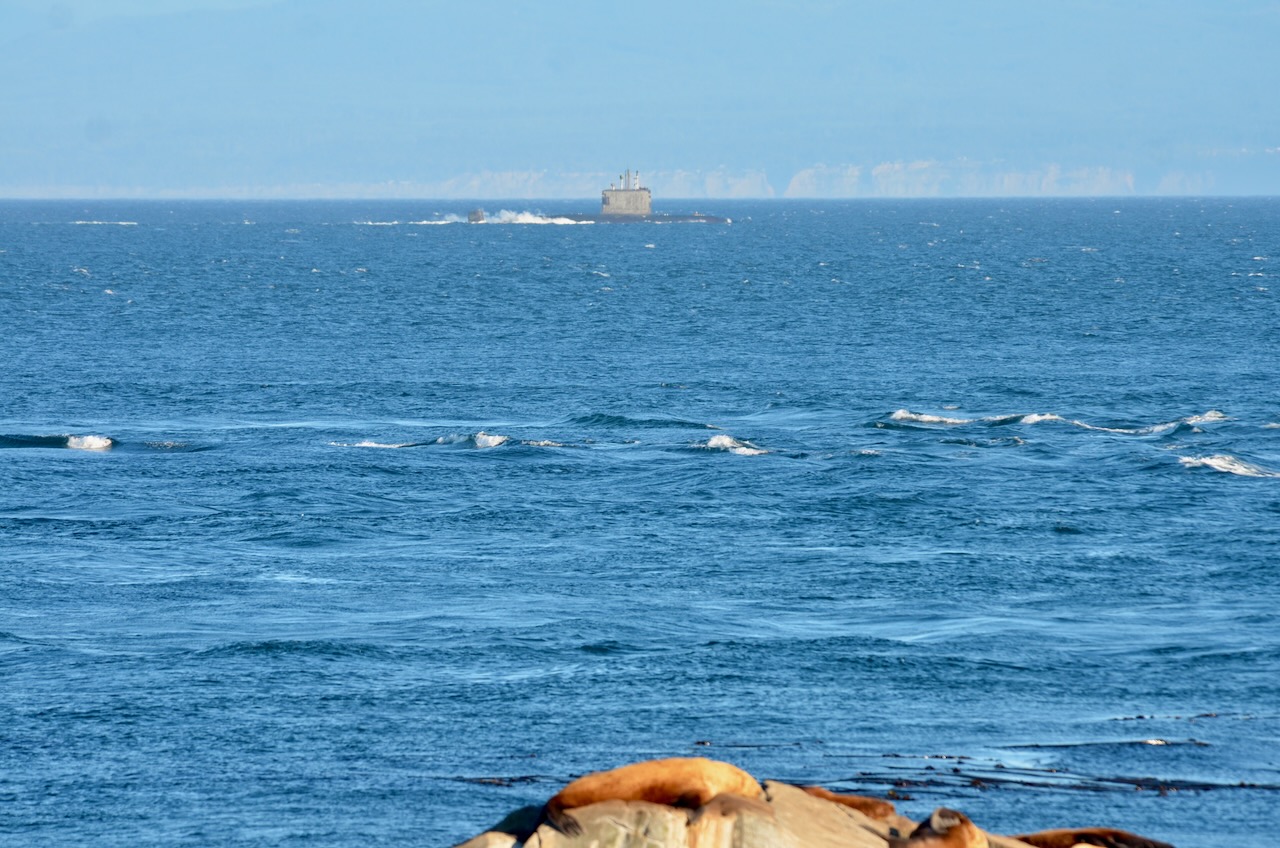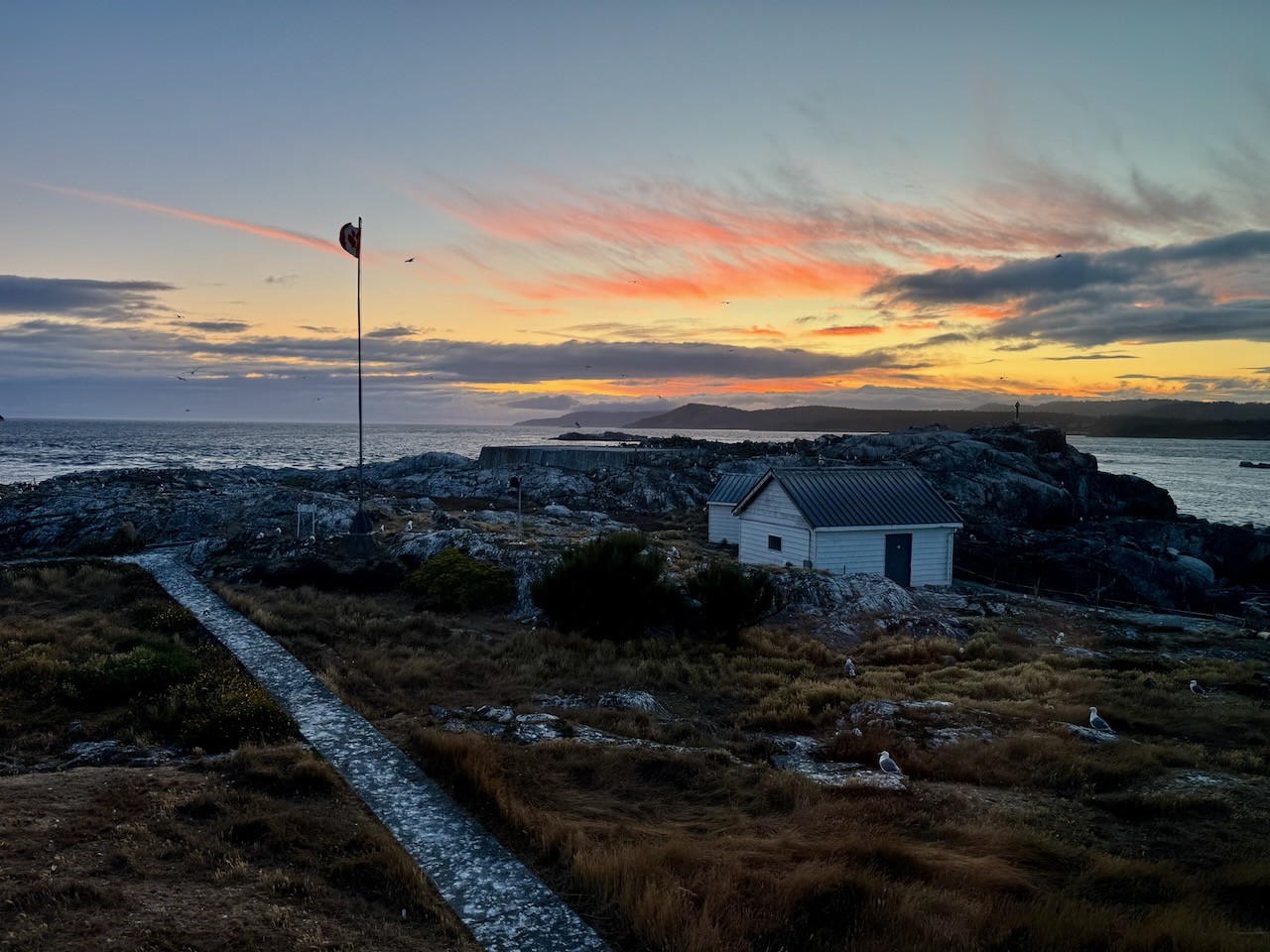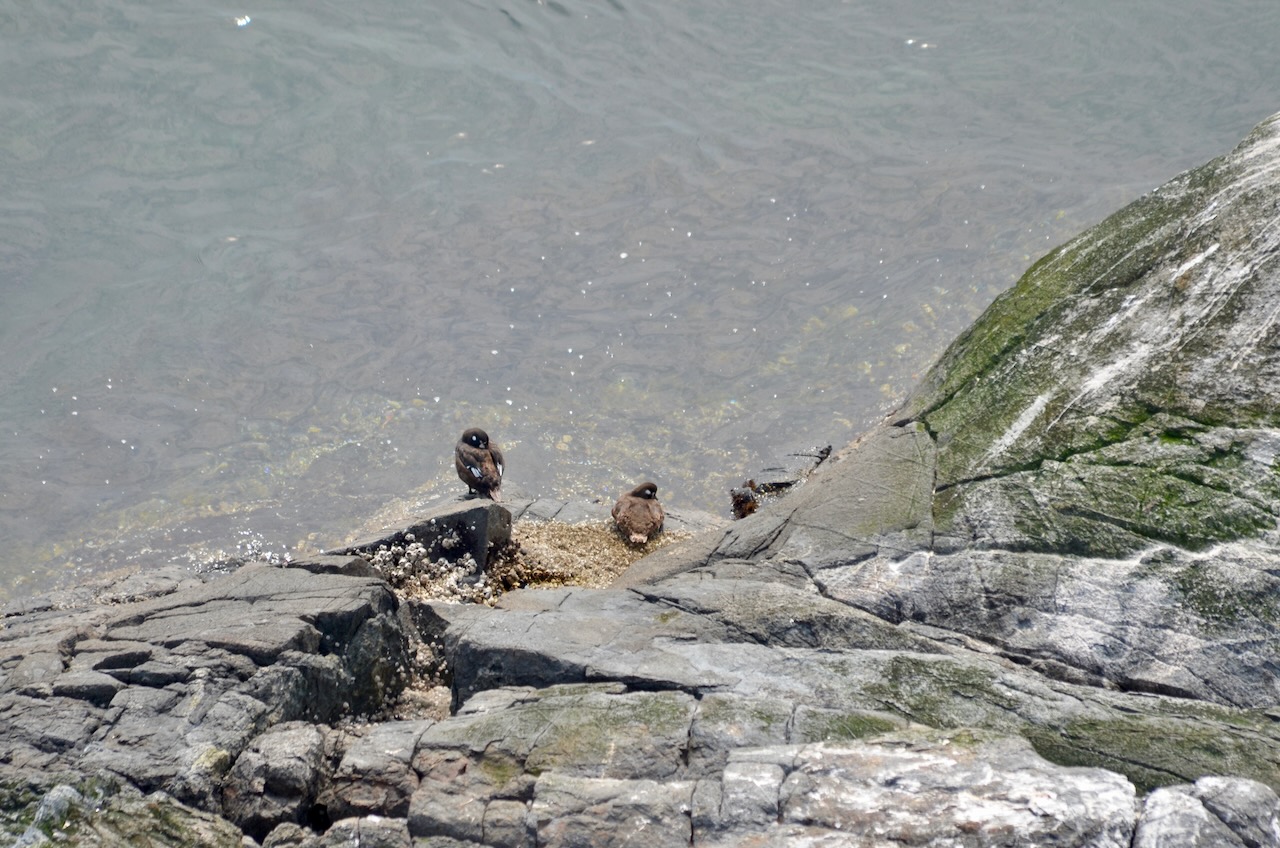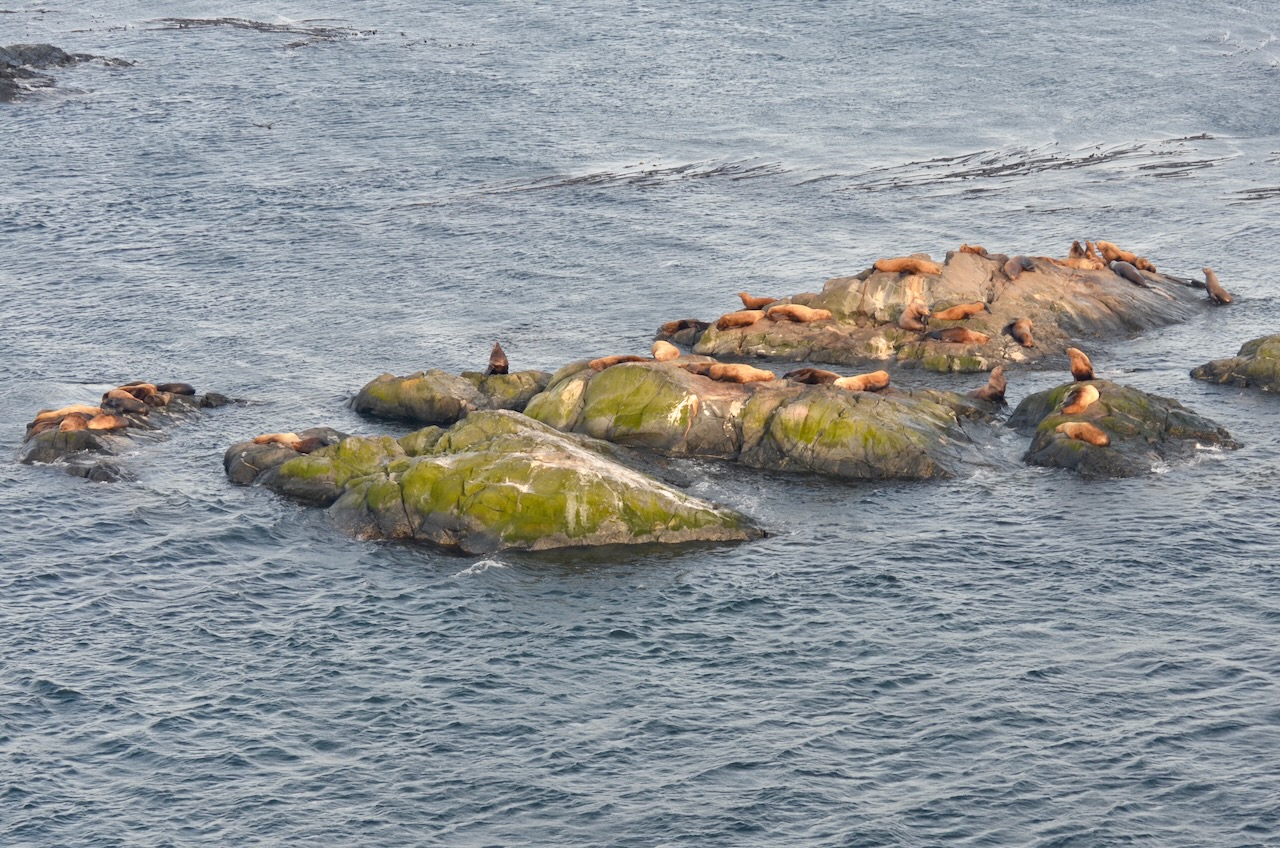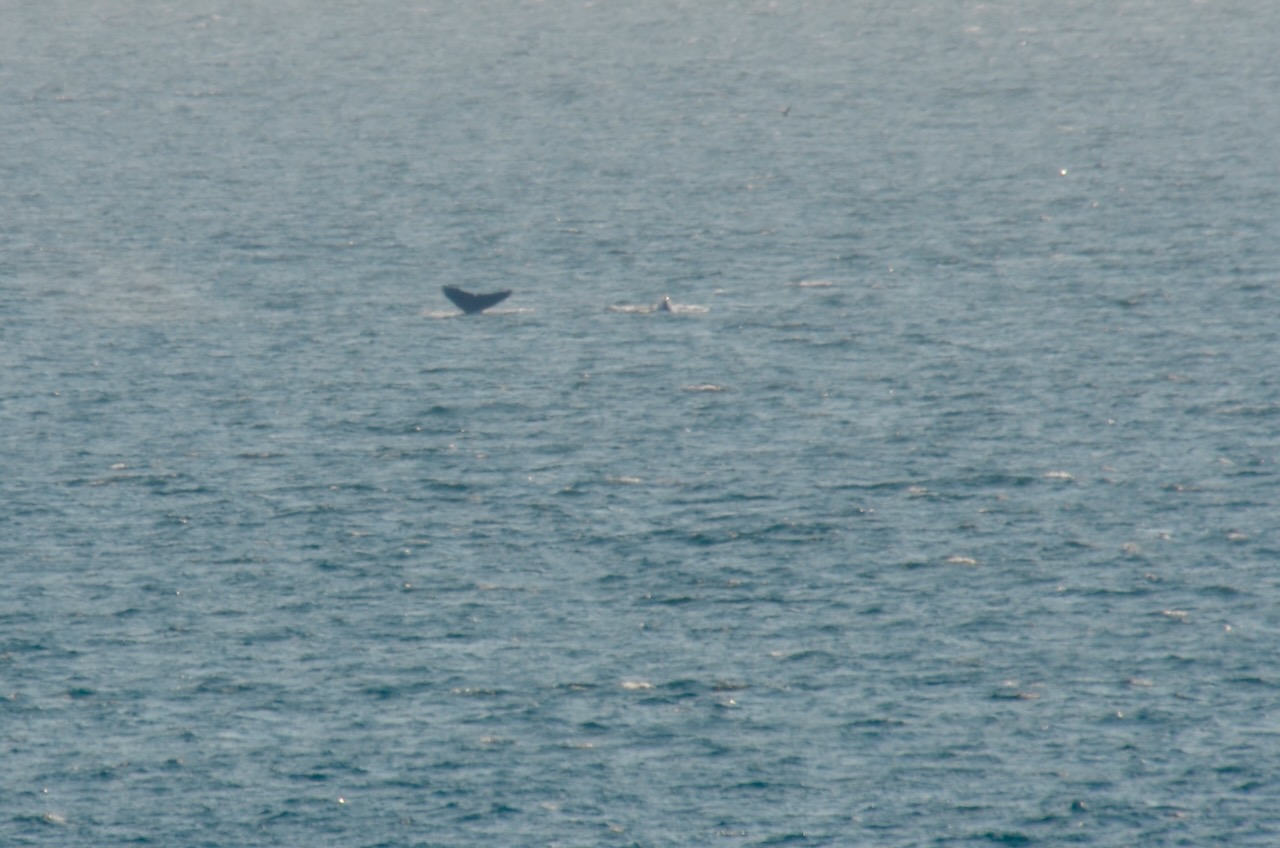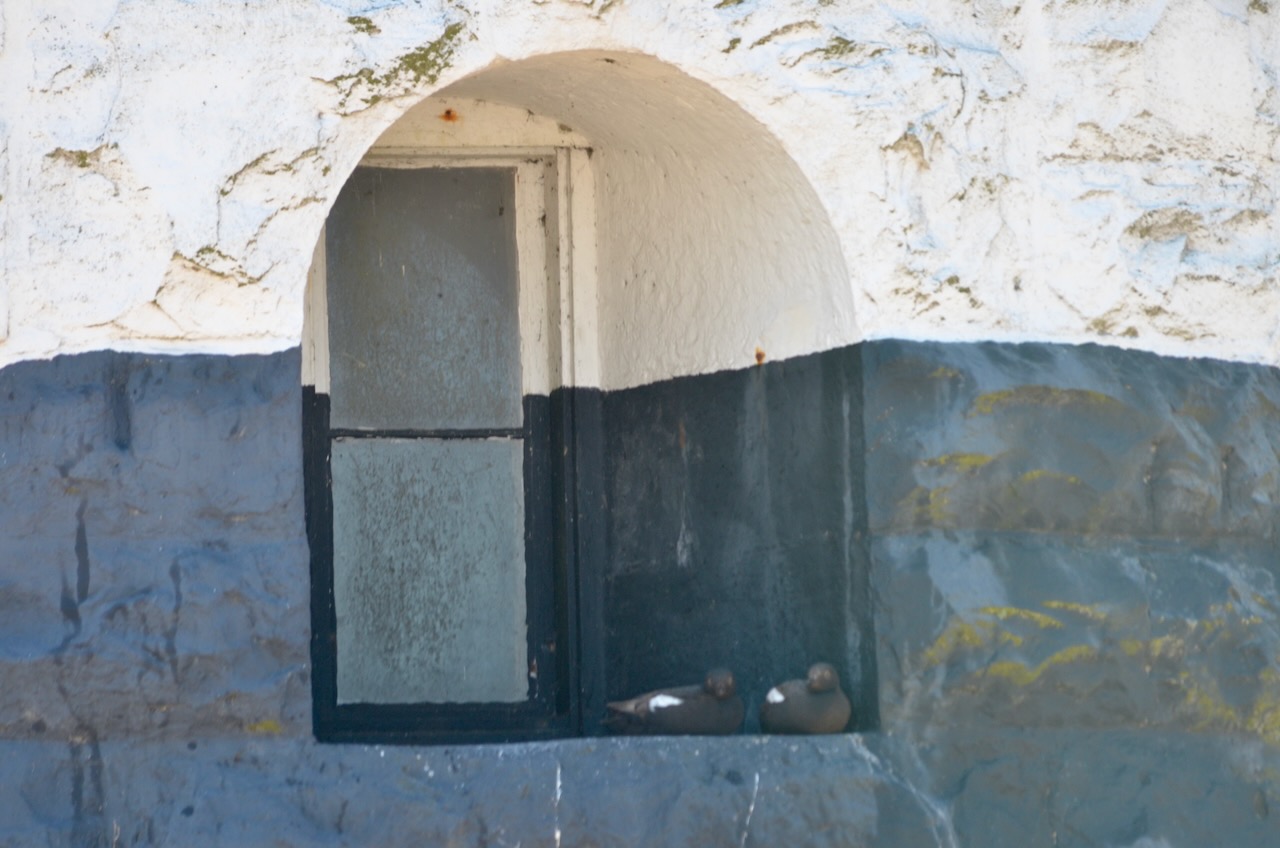Wildlife Notes:
- Orcas and humpback whales were south and east of the ecological reserve throughout the day. I did not get any photos, but enjoyed catching occasional glimpses of them through the binoculars.
Facility work:
- I replaced the hand winch on the boat cradle. The old winch was getting rusty and the strap was beginning to fray. I also tested all the electronics on the boat and motor while it was tied to the jetty.
Vessels:
- Ecotourism: 18
- Private: 4
Weather:
- Sky: Partly cloudy
- Wind: West 15-30 knots
- Sea: rippled in morning, up to 2′ chop in afternoon
- Air temperature: low 13 °C, high 17 °C
- Seawater temperature at max flood: 11.1°C
Photos from today:
- Black oystercatcher adult and chick on the rock west of the jetty. I had not yet seen this chick in the last week.
- Pearson College’s Pedder Explorer on a tour of Race Rocks with participants of the alumni reunion.
- Lowering the station boat down the tracks with the electric winch
- Testing the electronics on the boat while it was tied to the jetty.
- Time to replace the old rusty manual winch that helps secure the boat to the cradle
- Tada! The new winch is installed after scrapping rust off the metal arm and repainting.
- The boat is back in the boat house. The rest of the rust on the cradle will be dealt with another time.
- Royal Canadian Navy Victoria Class diesel submarine heading west past the ecological reserve this evening.
- Moonrise
- Sunset seen from the kitchen window
*All wildlife photos are taken at the furthest distance possible, and may be cropped to improve detail.







